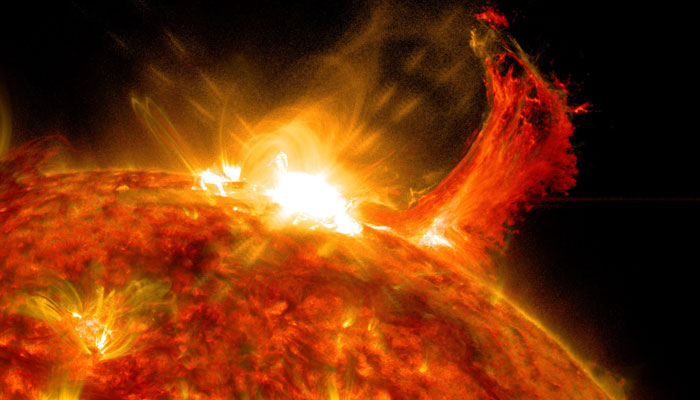Solar activity to peak earlier than expected. Will Earth survive it?
Sunspots are areas that appear dark on surface of the Sun because they are cooler than other parts of Sun
June 27, 2023

Solar activity in our Sun is increasing as expected by astronomers, but they had no idea that it would peak — the solar maximum — two years earlier than 2025.
According to scientists, by the end of this year, the sun would expect a solar maximum.
A solar physicist at the University College London, Alex James, told Live Science: "It's going to peak earlier and it's going to peak higher than expected."
Effects of solar maximum on Earth
During solar maximum, the magnetic field on the sun is at its lowest which is not good for Earth, as the magnetic fields act as a shield stopping emanating solar radiation and preventing solar flares and coronal mass ejections (CMEs).
According to Nasa: "Sunspots are areas that appear dark on the surface of the Sun. They appear dark because they are cooler than other parts of the Sun’s surface."
The magnetic field lines near sunspots cause explosions as they reorganise, causing solar flares. It releases a lot of radiation into space. The intense intense explosion, releases radiation that can interfere with our radio communications here on Earth, said Nasa.
Apart from this, another concern is solar storm events in which huge amounts of CME take place, travelling from space to hit the Earth's magnetic field.
Their effects could spark geomagnetic storms. As a result, the satellites, communication, internet connectivity, and GPS could be disrupted or damaged. It could also cause power grid failures.
Why solar maximum will hit soon?
Sun becomes interesting when there is weak magnetism on Sun.
Cooler parts of the sun — called sunspots — have strong magnetic fields, keeping some of the heat within the Sun from reaching the surface.
According to Nasa: "Sunspots are areas that appear dark on the surface of the Sun. They appear dark because they are cooler than other parts of the Sun’s surface."
“The magnetic field lines near sunspots cause explosions as they reorganise, causing solar flares. It releases a lot of radiation into space. The intense explosion releases radiation that can interfere with our radio communications here on Earth,” according to Nasa.
Therefore, scientists believe as the sun becomes more active, more sunspots, more solar flares and CMEs are expected to erupt.
With the help of tracking sunspots, scientists can monitor the solar cycle and its progress toward maximum activity.
It was predicted by a panel of scientists in 2020 that the sun's current cycle would reach its maximum in 2025 with a peak of roughly 115 sunspots.
However, the number of sunspots outstripped the predictions and in January 140 sunspots, were seen, when no more than 92 were predicted, according to a database of the National Oceanic and Atmospheric Administration. In May, there were 140 sunspots.









